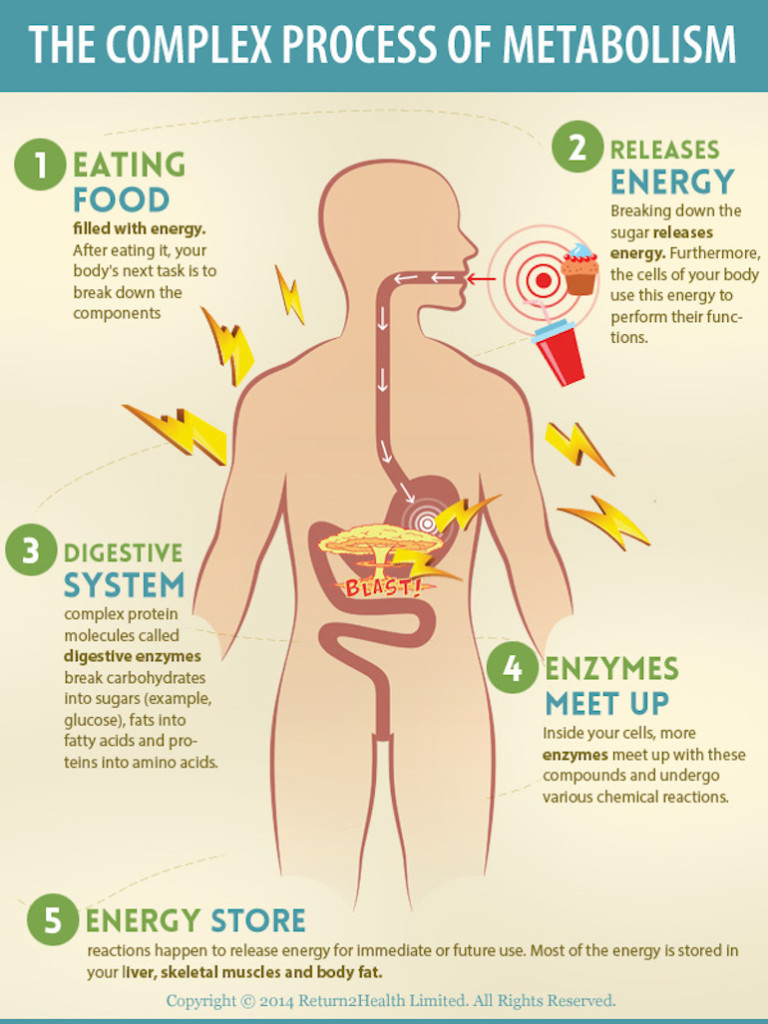How many times have you heard the phrase “I just have a slow/fast metabolism?” Probably too many to count. Metabolic pathways can be complex, but you don’t need to be a biochemistry major to know the basics.
So, what exactly is metabolism and how does it work?
Metabolism is a term that describes all of the chemical processes occurring in your body to break down food and turn it into fuel. The three main components that determine your metabolic rate are basal metabolic rate (BMR), physical activity and the thermic effect of food.

Photo courtesy of marilyn.ca
The biggest contributor to metabolic rate is your BMR, or the amount of calories you need just to stay alive. But before you blame (or thank) your mom and dad for your metabolism, know that genetics is only part of the equation. BMR also depends greatly on muscle mass since muscle is more energy-demanding than fat. The more muscle you have, the greater your BMR will be. This is why men often have a faster metabolism than women, and also why your metabolism slows as you age.

Photo courtesy of return2health.net
Metabolic rate also depends on physical activity and the thermic effect of food. The thermic effect of food is the amount of energy used by the body to digest and absorb nutrients. On average, the thermic effect of food expends 10% of your total calories. This means that you can actually slow your metabolism if you aren’t getting enough calories.

Photo by Jackie Fu
Everyone knows someone, or maybe is that someone, who can eat all day and seemingly never gain weight. It is a common misconception that thinner people have a faster metabolism. In fact, thinner people actually have slower metabolisms than heavier individuals since the more body mass you have, the faster your body has to work to keep you alive and well.

Gif courtesy of giphy.com
The truth is that scientists are still heavily researching why different people have drastically different metabolisms. The most important thing to remember is that muscle is the biggest contributor to metabolic rate. So if you’re looking for a scientifically proven way to boost your metabolism, lace up your sneakers and hit the weight room.


